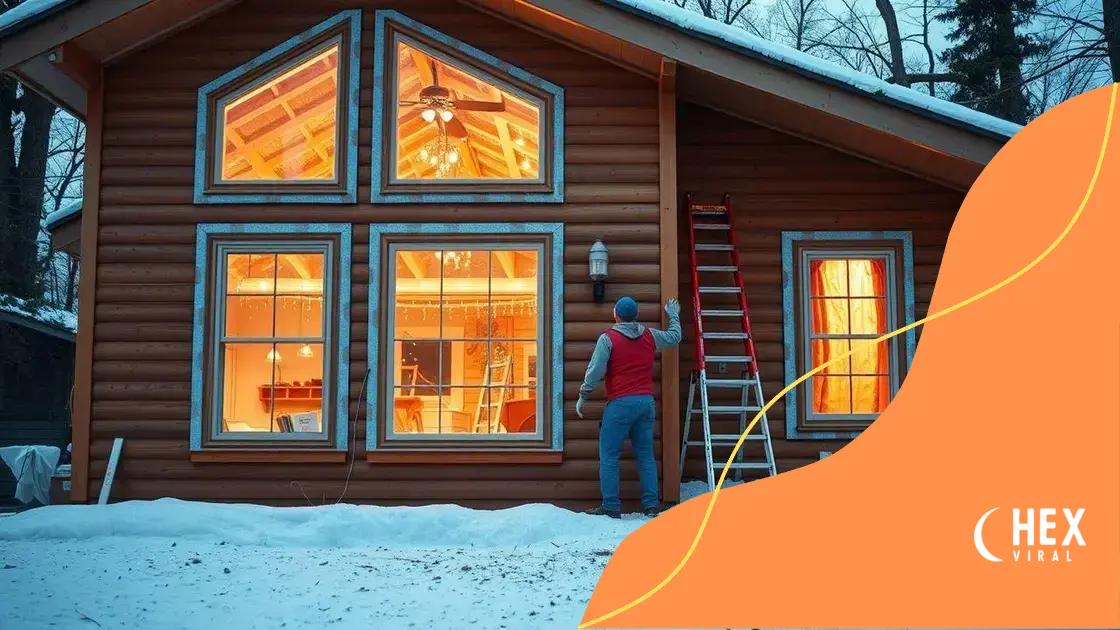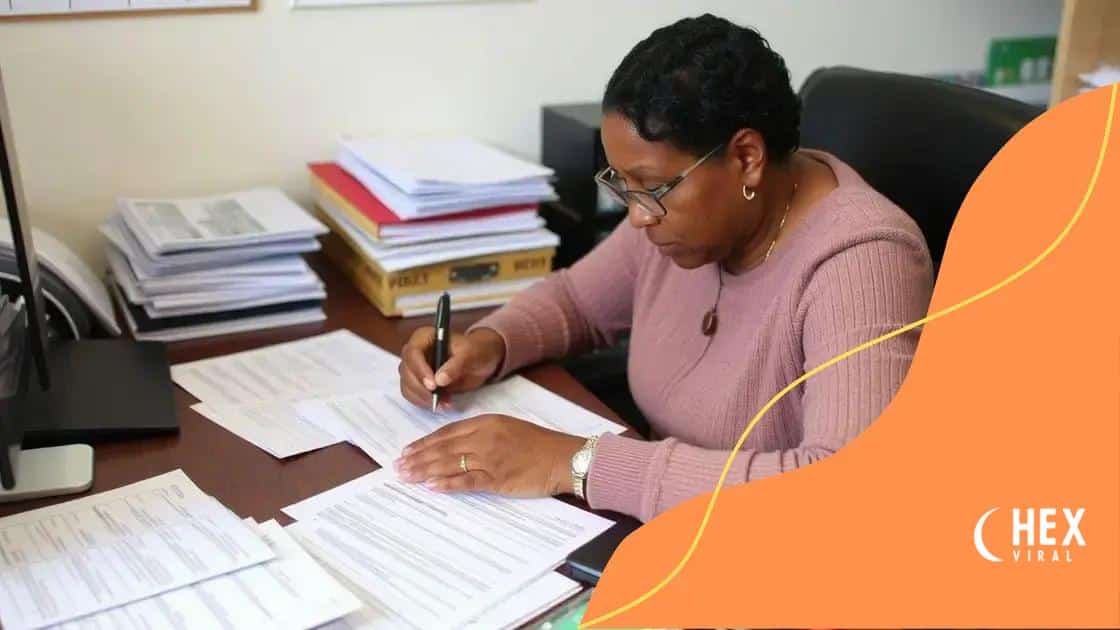Low-income weatherization assistance programs: a lifeline

Low-income weatherization assistance programs provide crucial support for eligible families by improving home energy efficiency, reducing utility bills, and enhancing overall comfort and safety.
Low-income weatherization assistance programs provide crucial support to families struggling with high energy costs. Have you ever wondered how simple home improvements can drastically lower utility bills? This article dives into these essential programs and their impact.
Understanding weatherization assistance programs
Understanding weatherization assistance programs can be a game-changer for families looking to manage energy costs. These programs help eligible households improve energy efficiency through various means. By enhancing your home’s energy performance, you can save money while making it more comfortable.
What are weatherization assistance programs?
Weatherization assistance programs provide financial aid and support for low-income families. The goal is to help them improve their homes by making them more energy efficient. These programs often include services like:
- Insulation installation to reduce heat loss.
- Sealing air leaks around windows and doors.
- Upgrading heating and cooling systems.
- Performing energy audits to identify needed improvements.
Many families don’t realize how these small changes can lead to significant savings on energy bills. By participating in these programs, you not only save money but also contribute to a healthier environment.
Eligibility criteria for assistance
To qualify for weatherization assistance, certain criteria typically apply. For example, income guidelines are often established to ensure that help goes to families who need it most. Additionally, homes must be owner-occupied or rentals, where the occupants meet the program’s qualifications.
How to apply for assistance
The application process can vary by location, but it generally involves a few key steps. You’ll need to gather necessary documentation, like income statements and proof of residence. Once you have that, contact your local weatherization agency to get started with your application.
Many programs also offer support throughout the process, ensuring that you understand each step. This can make it easier to access the help you need.
Eligibility criteria for low-income families
Eligibility criteria for low-income families seeking weatherization assistance can vary, but generally, these guidelines are designed to help those who need it most. It’s essential to understand the basic criteria to determine whether you qualify.
Common eligibility requirements
Most programs have set criteria that applicants must meet. These criteria often include:
- Income limits based on household size.
- Proof of residency in the home needing assistance.
- Occupancy—homes must typically be owner-occupied or rented by eligible tenants.
Meeting these requirements is vital, as they ensure that the aid goes to families who are truly in need. Many programs also take into account the age of the home and its current energy efficiency status.
Income verification process
To apply for assistance, you will likely need to provide proof of income. This can include pay stubs, tax returns, or benefits statements. By verifying your income, programs can assess your eligibility more accurately. Don’t worry—often, there are helpful staff members who can guide you through this process.
Steps to apply for assistance

Understanding the steps to apply for assistance through weatherization programs is crucial for low-income families. The application process may seem daunting, but breaking it down into manageable steps makes it much easier.
Gather necessary documents
Before starting your application, collect all the required documents. You will typically need:
- Proof of income, such as pay stubs or tax returns.
- Identification documents for all household members.
- Proof of residency.
- A list of current household expenses.
Having these documents ready will help speed up your application process.
Contact your local agency
Next, find your local weatherization assistance agency. You can usually do this by visiting state or county websites. Once you have their contact information, reach out to schedule an appointment or to ask any questions you might have.
During your first contact, the agency will explain the process in detail and may even offer guidance on filling out the application correctly. Don’t hesitate to ask for help if anything is unclear—all agencies want to assist you.
Complete the application
With your documents at hand and guidance from your local agency, you can now fill out the application. Take your time to ensure all sections are completed accurately. Mistakes might lead to delays.
Once the application is submitted, keep a copy for your records. This will allow you to track the status of your application later on and ensure you have all necessary information on hand.
Benefits of weatherization for households
The benefits of weatherization for households are numerous and impactful. Everyday families may not realize how enhancing their homes can lead to significant advantages. Through weatherization, homes become more energy-efficient, which translates to lower energy bills.
Energy cost savings
One of the primary benefits is reduced energy costs. Families can save a substantial amount on their utility bills by ensuring that their homes are properly insulated and sealed. Just think about how much you can cut down on expenses when you’re not wasting heat or air conditioning.
Improved comfort
Weatherization also enhances your comfort at home. With better insulation, your home stays warmer in the winter and cooler in the summer. This means fewer drafts and a more consistent temperature throughout your living space.
Health and safety benefits
Improving a home’s energy efficiency can also lead to better indoor air quality. Proper ventilation helps remove allergens and pollutants, contributing to a healthier living environment. Programs often address safety issues, such as reducing carbon monoxide risks from gas appliances, ensuring homes are not only comfortable but safe.
Real-life success stories from recipients
Real-life success stories from recipients of weatherization assistance programs show how these initiatives positively impact families. Many households experience life-changing benefits after receiving support.
Case Study: The Johnson Family
The Johnson family, living in an older home, struggled with high energy bills every winter. After qualifying for a weatherization program, they had insulation added and their windows sealed. Now, they enjoy a warmer home and have reduced their heating costs by 30%!
Transforming Lives: Maria’s Journey
Maria, a single mother of two, faced difficulties keeping her home warm. With the help of the program, she received energy-efficient upgrades, including a new heating system. Today, her home is much more comfortable, and she has also noticed an improvement in her children’s health due to better air quality.
Community Impact
These success stories reflect a larger positive trend. Communities benefit when residents participate in weatherization programs. With lower energy costs and improved living conditions, families like the Johnsons and Maria’s are more empowered to thrive.
FAQ – Frequently Asked Questions about Weatherization Assistance Programs
What is a weatherization assistance program?
A weatherization assistance program helps low-income families improve their home’s energy efficiency, reducing energy costs and enhancing comfort.
Who is eligible for these programs?
Eligibility typically includes low-income households, but criteria can vary by location; proof of income and residency are often required.
What types of improvements are made through weatherization?
Common improvements include insulation installation, air sealing, heating system upgrades, and energy audits.
How can I apply for assistance?
To apply for assistance, contact your local weatherization agency to learn about the application process and required documentation.






